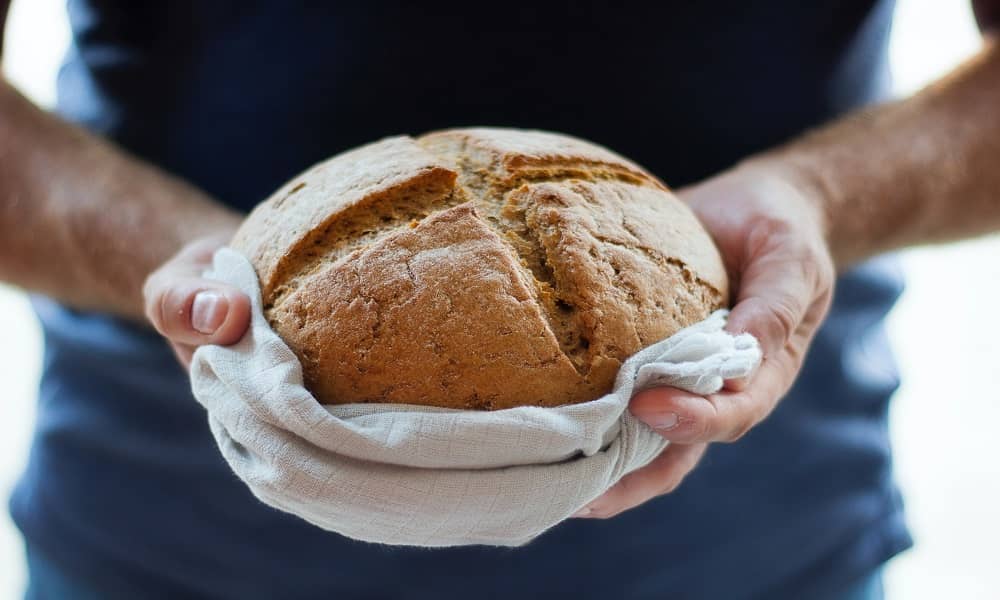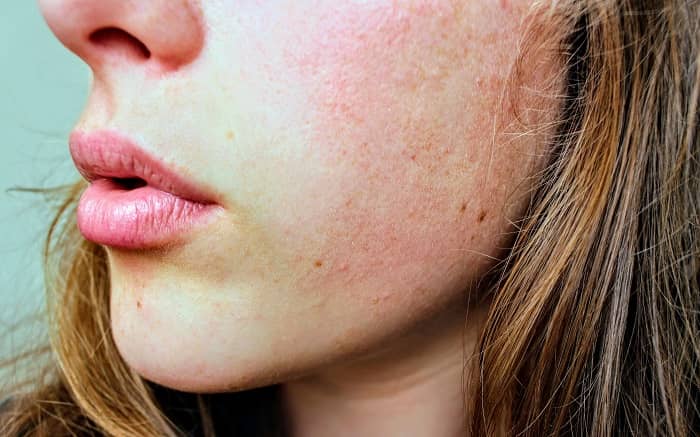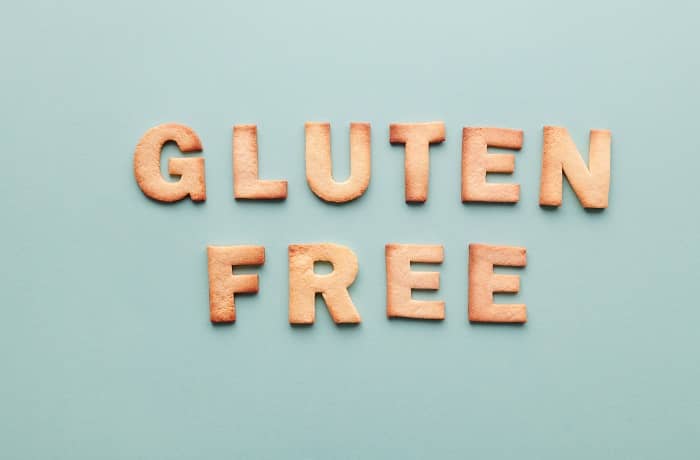


09 Apr Most Common Gluten Intolerance Symptoms [Diet Recommendations]
Gluten is a protein richly found in cereals, such as wheat, barley, and rye. However, some people often show intolerance towards gluten and show reactions like bloating or pain after eating foods that contain gluten.
People often misunderstand the signs of gluten intolerance with celiac disease and end up taking the wrong medicines.
Thus, it’s important to have a clear understanding of the gluten intolerance meaning and its symptoms to differentiate it from celiac disease.
To help you with that, here we have a blog that clearly points out the gluten intolerance symptoms and other important information about the condition.
Gluten intolerance encompasses all the physical reactions in response to the entry of gluten into your body.
These reactions often show similarities to the symptoms of Celiac disease and wheat allergy.
However, celiac disease is an autoimmune disorder that affects your digestive tract. On the other hand, gluten intolerance doesn’t affect the gastrointestinal tract similarly!
Apart from this, wheat allergy which is often mixed up as gluten intolerance is a fatal condition as it often leads to impairment in breathing.
Altogether, gluten sensitivity symptoms are less severe as compared to those of celiac disease.
With the lines drawn among the three conditions, it’s easier to not mix up gluten intolerance with other conditions.
Moreover, in the subsequent sections, we will be outlining some of the major symptoms of gluten intolerance.
Highlights:
#1. Signs of gluten intolerance
#2. Gluten-free diet or foods to eat if you’re gluten intolerant
#3. Foods to avoid if you’re gluten intolerant
#4. Substitutes for gluten foods
#5. Commonly asked questions about gluten intolerance
[8] Early Signs of Gluten Intolerance Or Gluten Allergy Symptoms
The most common signs and symptoms of gluten intolerance include:
- Bloating
- Abdominal pain
- Sudden weight loss
- Headache
- Diarrhea and constipation
- Skin relates issues
- Fatigue
- Depression symptoms
Like mentioned, signs of gluten intolerance are often confused with many other medical conditions like wheat allergy and celiac disease.
Thus, it’s imperative to have a clear idea about the symptoms of this condition to not confuse it with wheat intolerance symptoms or other such cases.
Hence, here are the 8 major signs of gluten allergy or gluten intolerance that will help you identify the condition.
Furthermore, it’ll help you be conscious about the condition you are going through and help you choose the right medicines and diet.
#1. Bloating


Ever felt your stomach swelling up or felt as if your stomach was getting filled with gas?
Both conditions are called bloating which often makes a person feel miserable.
Though bloating is a common sign of many disorders, it’s also a major symptom of gluten intolerance.
In fact, if you ask us “what are the first signs of gluten intolerance”, the answer will include bloating as the most common complaint from people with gluten sensitivity.
Moreover, according to a prominent study, 87% of the people suffering from non-celiac gluten sensitivity show signs of bloating.
#2. Abdominal Pain
Abdominal pain can be a result of several disorders and diseases.
However, it’s also a common and one of the first signs of gluten intolerance.
Around 83% of the people suffering from gluten intolerance undergo abdominal pain and discomfort after eating foods rich in gluten.
#3. Weight Loss
Unexpected or sudden weight loss is often a matter of concern.
According to studies, unexplained weight loss is a major symptom in gluten intolerant people also suffering from celiac diseases.
In a prominent study, two-thirds of the celiac disease patients showed weight loss within six months.
Moreover, weight loss can also be a result of poor absorption of nutrients and other digestive problems.
With the signs and symptoms pretty clear, now you must be cautious about the foods you should eat and the foods that you should avoid.
Thus, here we have the next section focusing on the diet plan that you could follow for staying away from the signs of gluten intolerance.
#4. Headaches



Headaches and migraines are common in people once in a while.
Migraines are pretty common in people on the western side of the world with almost 10 to 12% of the people showing signs of migraines.
Do you know what’s even more interesting?
Studies show people suffering from gluten intolerance are prone to migraines as compared to others.
#5. Diarrhea, Constipation, and Odorous Feces
Occasional scenarios of diarrhea or constipation are very common.
However, when you start seeing such episodes daily, there is something to worry about.
These regular cases are common signs of gluten allergy!
In cases of people suffering from celiac disease, eating gluten causes severe inflammation in the small intestine.
This leads to damage in the gut lining and causes poor absorption of nutrients and discomfort in your intestine, which consequently causes diarrhea.
However, gluten also causes problems in people who are not suffering from celiac.
According to a study, more than 50% of people suffering from signs of gluten intolerance showed signs of diarrhea, and 25% of them experience constipation.
Apart from this, people might also experience smelly stools because of poor absorption of nutrients.
The frequent cases of diarrhea might also cause severe diseases and health issues.
#6. Skin Related Issues



Gluten Intolerance has active effects on your skin.
In cases of people suffering from celiac diseases, gluten causes a blistering skin condition called dermatitis herpetiformis.
NOTE: All the individuals suffering from celiac disease are sensitive to gluten but less than 10% of them show digestive symptoms exhibiting celiac disease.
These are some skin-related diseases that have shown improvement while on a gluten-free diet:
- Psoriasis – a disease that causes redness and scaliness of the skin
- Alopecia Areata – an autoimmune disease that shows non-scarring hair loss
- Chronic Urticaria – a condition where skin shows itchy, pink, or red lesions with pale centers.
#7. Tiredness
The feeling of tiredness is quite common and often not linked with any diseases.
However, the constant feeling of tiredness cannot be normal and might be an underlying result of some disease.
If we talk about the people suffering from gluten intolerance, they are quite prone to fatigue and tiredness, especially after eating gluten.
According to a study, 60 to 82% of gluten intolerant people show tiredness and fatigue.
Apart from this, gluten intolerance can also cause iron-deficiency anemia, which causes more tiredness and even loss of energy.
#8. Depression
Depression affects almost 6% of adults with its symptoms ranging from feelings of hopelessness and an inability to focus on anything.
People who have digestive issues often show anxiety and depression as compared to healthy individuals.
Moreover, these symptoms are also common in people who have celiac diseases and show gluten sensitivity.
Staying gluten-free is the best diet for depression if you’re gluten intolerant.
However, you must be wondering how gluten intolerance can cause depression.
Let us answer that for you by presenting you with the following theories that show how signs of gluten intolerance can include depression:
[vc_accordion style=’accordion’] [vc_accordion_tab title=’Abnormal Serotonin Levels’ icon=” icon_color=”]Serotonin is an active neurotransmitter that helps cells communicate with each other.
It is also called the happiness hormone, and when its level goes down, symptoms of depression are seen.
[/vc_accordion_tab] [vc_accordion_tab title=’Gluten Exorphins’ icon=” icon_color=”]These are the peptides that are formed during the digestion of gluten proteins.
These peptides often interfere with the nervous system and increase the risk of depression.
[/vc_accordion_tab] [vc_accordion_tab title=’Gut Mycobacteria’ icon=” icon_color=”]The increase in harmful bacteria and reduction of the good bacteria affects the nervous system and increases the risk of depression.
Besides, there are many studies that claim that people with gluten intolerance who were earlier depressed felt better because of following a gluten-free diet.
Plus, this also shows that exposure to gluten in gluten intolerant people encourages signs of depression.
[/vc_accordion_tab] [/vc_accordion]
Gluten Intolerance: Foods to Eat and Foods to Avoid!!
With the gluten intolerance symptoms checklist out of the way, you now need to plan your diet to be sure that no gluten in any form enters your body.
To do so, your mind should be clear about the foods you can take and the foods that have to be avoided.
Thus, here we’ve got a few examples laid down to help you plan your eating routine.
Firstly, we’ll talk about the foods that you can eat.
Gluten-Free Diet



Some of you might find following the diet a little difficult but will soon adapt to it.
So, don’t worry!
The first thing that you’ve got to do here is read the labels of the food you are planning to buy.
As soon as you find the word gluten or even wheat, you know that the item has to go back on the shelf.
In a gluten-free diet, you will have to pay major attention to healthy whole foods and avoid any sort of cereals and grains that contain gluten.
Here are the gluten-free grains you can go for.
Gluten-Free Grains
- Rice
- Oats
- Quinoa
- Flax
- Millet
- Sorghum
- Tapioca
- Buckwheat
- Arrowroot
- Amaranth
Take Note: Make sure you go for the oats variants that are gluten-free!
Next up, we’ve some of the other gluten-free foods.
Gluten-Free Whole Foods
Here are the whole foods that you can try under your gluten-free diet:
- Meat
- Fish and seafood
- Eggs
- Dairy products
- Fruits
- Vegetable legumes
- Nuts
- Tubers
Apart from this, also make sure that you go for naturally gluten-free foods and not the processed ones as they will provide you with healthy nutrients.
Moving on, it’s also important to be aware of the foods you should stay away from.
Thus, here is the list of foods that you should avoid if you are gluten intolerant.
Gluten Intolerance Foods to Avoid
Glutens are basically proteins that allow wheat and other such cereals to absorb water and remain elastic.
It is because of the gluten that the dough gets such an amazing texture and it is possible for it to rise.
Wheat, rye, and barley are active sources of gluten and are often found in:
- Bread
- Cookies
- Pasta
- Semolina based products
- Beers
Gluten can also be present in the products that are not cereal-based including:
- Soups
- Sauces
- Seasonings
- Canned foods
- Spices
With that being said, someone might question how one can cut on gluten by using gluten substitutes.
Thus, we’ll have our next section dealing with prominent gluten substitutes.
Substitutes for Common Gluten Foods



There are many foods that contain gluten. Hence, it can get quite difficult to switch from it to a diet free of gluten.
But there’s nothing to worry about as you can also try gluten-free substitutes for foods that are rich in gluten.
Here are a few substitutes for gluten-rich foods you can include in your platter:
- For beer, you can switch to wine or spirits
- In the case of burgers, you can go for gluten-free burgers
- Soba noodles can be replaced by noodles made of beans and lentils
- You can try going for tamari sauce instead of soy sauce
- There are medications rich in gluten too. In such cases, you can go ahead with certified gluten-free medicines.
- In the case of barley malt, try red wine, apple cider, or rice vinegar.
Summing Up
Signs of gluten intolerance are often confused with celiac diseases or the symptoms of wheat allergy.
This makes it really important for individuals to know the clear differences among the symptoms of all these disorders.
Keeping this in mind, we’ve formulated the above blog that brings out some of the key signs and symptoms of the gluten intolerance condition.
Besides, the blog also talks about how to deal with such conditions by avoiding certain foods!
Paying special attention to a foodie’s needs, there’s a long list of delicious items that our gluten-intolerant readers could rely on!
You just have to be a good planner of your diet and lifestyle, and you'll be able to live with the signs and symptoms of gluten intolerance without any troubles.
Hopefully, today’s blog will help people get a better perspective on treating the disorder!
FAQs
Here we address some of the most searched questions by gluten intolerant people.
#1. Can you suddenly become gluten intolerant?
Yes, you can definitely show signs of gluten intolerance all of a sudden.
The occurrence totally depends on your genes.
Some people can show symptoms at an early age, while for others it could be at older ages.
Thus, whenever you feel your signs and symptoms are matching that of gluten intolerance, make sure you consult your doctor!
#2. Celiac disease vs gluten intolerance vs wheat allergy: What’s the difference?
These three medical conditions are often confused with each other but are completely different.
- Celiac disease is an autoimmune disorders and shows a negative response to gluten entering the body. As gluten enters the body, it triggers a reaction that causes damage to the inner lining of the gut. Thus, causing poor absorption of nutrients.
- Gluten Intolerance is often famous for the non-celiac sensitivity of the body and has similar symptoms as that of Celiac disorders. Though both responses are the same, there is a difference between the longevity and consequence of the diseases. Gluten intolerance is less severe.
- Wheat allergy is a response of the body towards all the proteins present specifically in wheat. However, unlike celiac disorders, the symptoms are temporary.
#3. How do you test for gluten intolerance?
So, how to test for gluten intolerance?
There are no specific labs or biomarkers for diagnosing gluten intolerance, and it’s only diagnosed based on your reports.
There are no credible ways to undergo a gluten intolerance test at home.
Your best shot would be to evaluate your diet and take note if you’re experiencing any of the signs of gluten intolerance.
Having said that, here’s how to check for gluten intolerance:
- Eliminating chances of wheat allergy and celiac diseases which include tests like skin prick tests and upper endoscopy procedures.
- Next is an elimination diet or gluten challenge that removes gluten from the diet for a time period. The healthcare official assesses symptoms and then re-introduces gluten to monitor your body’s reaction.
- A clear relation is made between the presence of gluten in your body and the symptoms to establish whether you have gluten intolerance.
#4. How long after eating gluten do symptoms start?
The symptoms vary from person to person.
For some gluten intolerant people, symptoms might begin as soon as you eat any gluten-rich food.
For others, it could be a few hours after eating.
Some people also show symptoms after one or two days of eating gluten-rich foods.
#5. How long do gluten intolerance symptoms last?
There are various symptoms of gluten intolerance and they take different durations of time to fade away.
Some of the symptoms can take a whole week to disappear while others could take a longer or a shorter duration of time.
The time duration it takes for the symptoms to disappear also depends on the severity of the symptoms, of course.



No Comments